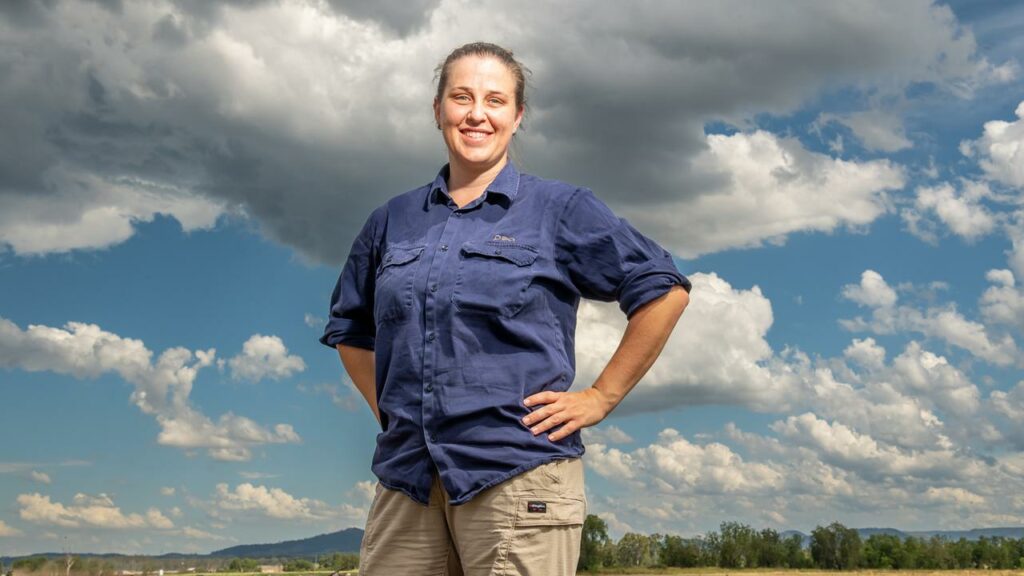Disease-resistant peanuts come to life in Qld field
Nick Gibbs |

The long road to breeding a disease-resistant variety of peanut began in a straightforward fashion for researcher Shona Wood.
“I literally get a peanut flower and I press it against another peanut flower,” the University of Southern Queensland PhD student says.
“I get the pollen from one and I put it on another one, it’s all traditional breeding methods.”
The next step was to plant about 400 varieties that were “essentially brother and sister” in Queensland’s Kingaroy region before exposing them to net blotch disease.
“We crossed a resistant parent and a susceptible parent … all of the seed from that, we put into the field and then they essentially became their own varieties,” Ms Wood said.
Net blotch is a fungal disease and if left uncontrolled can cause yield losses of up to 50 per cent in peanut crops, causing millions of dollars in damages.
Historically, spraying chemicals had been the main way to control disease, Ms Wood said.
This method enables distinctions between resistant and susceptible lines.
A couple of the new plants have good disease resistance, and the next step is to combine this with other qualities farmers like, such as high yield.
The existing plants also have potential to be resistant to other problems foliage, such as late leaf spot and rust.
“Growers want resistance for everything, so there ‘s a whole bunch of other diseases, including soil-borne disease, that need research,” Ms Wood said.
“It’s just the tip of the iceberg, and they’re excited we’re moving in the right direction.”
It’s also important to expose the plants to diseases over multiple years, accounting for different environmental effects.
“It’s a long process,” Ms Wood said.
With her PhD submitted, it’s just the start of the road for her research.
“It sounds silly, but making sure that we look after our farmers and give them varieties that help them, but also produce enough food for the world.”
AAP


